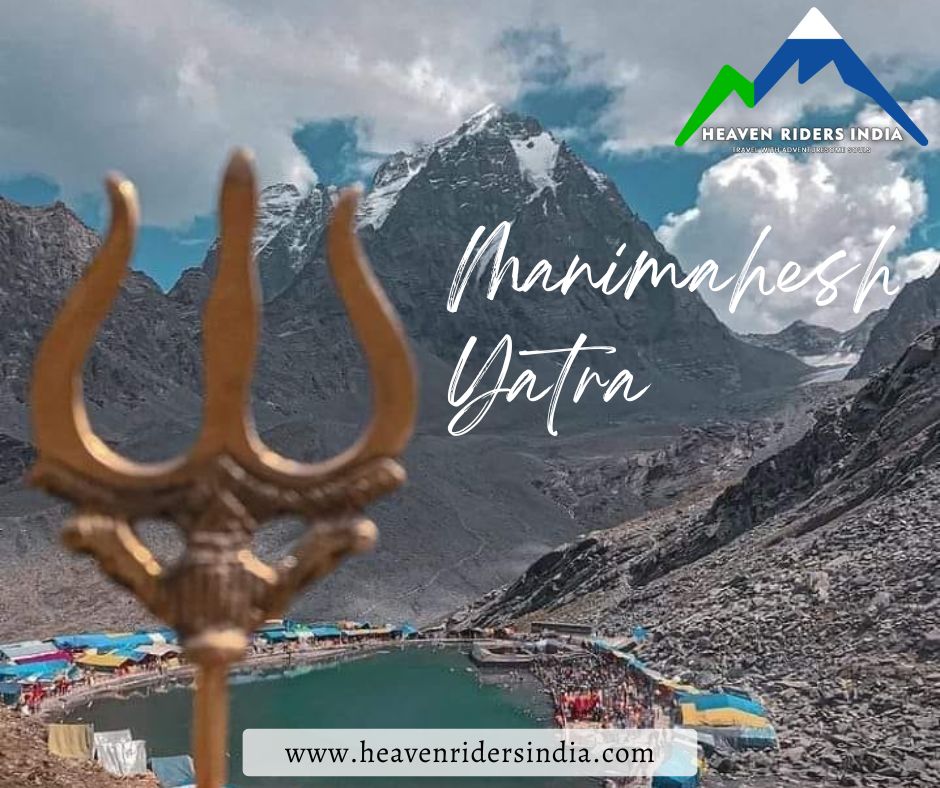Manimahesh Yatra – Himalayas Are One in Spirituality
Himachal Pradesh boasts some of the toughest ranges, and among those is one of India’s most serene and spiritual treks—the Manimahesh Yatra. The yatra is a spiritual pilgrimage to the breathtaking Manimahesh Lake, which is believed to be home to Lord Shiva. The lake is situated at an elevation of 4,080 meters, near the glistening Manimahesh Kailash Peak of Chamba district. Thousands of devotees from all corners of India flock to this holy site annually to pray, take a holy dip in the icy lake, and become one with God.
The Story Behind Manimahesh Yatra
It is said in Hindu mythology that the Manimahesh Lake was formed when Lord Shiva married Goddess Parvati. “Manimahesh” means the name of the lake, literally the jewel (Mani) on the head of Lord Shiva (Mahesh). The mountain above the lake glows beautifully in sunshine and moonlight so that it glows like a glowing jewel.
The locals believe that Lord Shiva resides at the top of Manimahesh Kailash Summit and meditates there. Nobody ever manages to climb this mountain. The inhabitants believe that only Lord Shiva gives a glimpse of the top to the pious ones. Due to this, Manimahesh Yatra is not a trek—it’s a pilgrimage and belief.
When the Yatra Takes Place
Manimahesh Yatra is conducted annually in August or September, during Bhadon, which is a Hindu month. The principal yatra is conducted on the eighth day following the new moon. It is referred to as Radha Ashtami. It is said that the yatra conducted at this time is Lord Shiva’s blessed yatra.
The trek begins approximately from Hadsar, a small village near Bharmour in Chamba. Pilgrims trek 13 kilometers to Dhancho, a breathtaking location with a gigantic waterfall. There is a night camp here by some pilgrims before a further trek to Gauri Kund and then Manimahesh Lake.
Women bathe at Gauri Kund since it is held to be the ghat of bathing of Goddess Parvati. Men also take their ritual bath at Shiv Kund, a little below that. Immersion in such cold waters is to purify sin and cleanse the soul before they actually access the lake.
The Yatra Route
Manimahesh Yatra is filled with nature and spiritual forces. The trek is surrounded by snow-covered mountains, waterfalls, and lush green valleys. During the ascent to the hill, devotees chant “Har Har Mahadev.”
Two routes exist to reach Manimahesh Lake:
Hadsar Route—Pilgrims’ favorite route.
Kugti Village Trek Trail—It is also known as the Manimahesh Parikrama Trek. It is tougher and longer. This trek entails visiting the well-known Kartikeya Swami temples and the 84 old temples (Chaurasi Temples) in Bharmour.
The Manimahesh Parikrama Trek entails the circumambulation of the sacred Manimahesh Peak. The pilgrims believe that going in a circle around the circle is sacred and results in balance for the soul.
Why the Manimahesh Yatra Is So Special
Manimahesh Yatra is not a trek to a lake but a divine pilgrimage. People also feel that if they are fortunate enough to see the reflection of the Kailash Peak in the lake water as crystal clear, then Lord Shiva has bestowed his blessings upon them.
The shade of the lake also changes at some point—blue in some, sun-golden in others. It is believed that if Lord Shiva gets satisfied, then there is good weather and human beings can view the top. But if he is meditating, clouds take control over the mountain.
For each pilgrim who undertakes the journey for Manimahesh Yatra, the trek is a reverse process, heavenly and peaceful in nature.
Important Sites on the Route
Manimahesh Yatra leads one through some of the most beautiful and sacred sites:
- Bharmour: The “temple land” comprises 84 old temples known as Chaurasi Temples. It is also the yatra base camp.
- Dhancho Waterfall: Picturesque waterfall where most of the pilgrims camp.
- Gauri Kund: The women’s sacred bathing pool, said to have been bathed in by Goddess Parvati.
- Shiv Kund: The male sacred bathing pool.
- Kartikeya Swami Temple: Lord Kartikeya, the son of Lord Shiva, is worshiped near Kugti village.
Each stoppage increases the spiritual ambiance and beauty of the Manimahesh Yatra.
Preparation for the Yatra
Though Manimahesh Yatra is a religious endeavor, there is physical preparation also. The trek will be tiring and arduous, and therefore casual wear, warm clothing, and raincoats have to be worn.
There are open food and rest camps (langars) along the route where the pilgrims can take lunch and take rest. Medical facilities are also available. Walk slowly, drink lots of water, and rest whenever possible.
Anyone of any age group performs the Manimahesh Yatra, which proves the amount of devotion that lends strength even on challenging routes.
Best Time to Visit
Mid-August and late September are the best times to do the Manimahesh Yatra. The weather is good, and the pilgrimage officially takes place during this time of the year. Incense, chanting, and singing surround the atmosphere since the whole area comes alive.
The route shuts in with additional snowfall afterwards, and the area shuts down for several months. The lake freezes during winter, and a serene but tranquil landscape dominates.
A Pilgrimage of Faith and Beauty
Manimahesh Yatra is a trek where religion and nature intersect. It’s an opportunity to tread the same paths on which pilgrims of every century have walked for centuries. The ringing of bells, slicing wind off the mountains, and the vision of the grand summit all combine to provide an experience that is spiritual.
Walking on Manimahesh Lake, whose peaceful waters reflect the white summit, you sense the force of faith. The pilgrimage imparts you with tolerance, patience, and gratitude to nature.
Manimahesh Yatra is so much more than the destination where faith comes face to face with the Himalayas—it’s a sacred journey that encounters the pilgrim’s soul with Lord Shiva.






Comment (0)